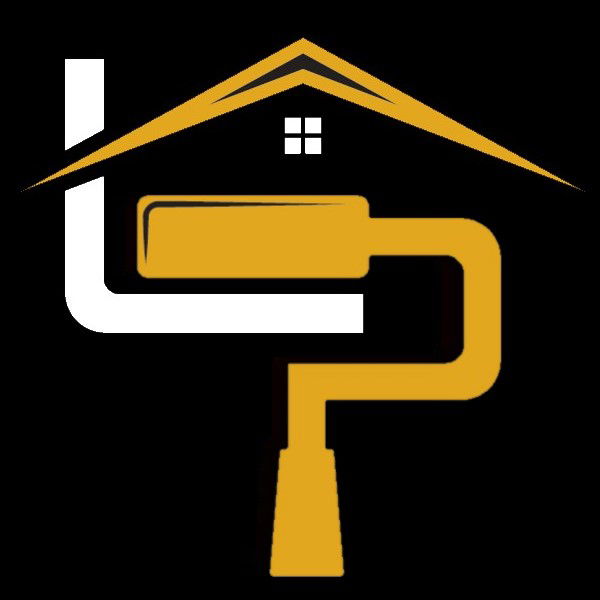Elevating Excellence: Comprehensive Guide to Quality Control in Painting Projects

Key Features
- Pre-project Planning: A detailed quality control plan ensures smooth execution and clear benchmarks for success.
- Daily Quality Checks: Frequent inspections keep standards high and allow for real-time adjustments.
- Surface Preparation: Cleaning, sanding, and priming ensure better paint adhesion and prevent failures.
Quality Control in Painting
When it comes to delivering a flawless paint job, quality control is the name of the game. Whether you’re working on a small residential project or a large-scale commercial painting job, ensuring high standards throughout the process is non-negotiable. Let’s dive into the key strategies and techniques that guarantee excellence from start to finish.
What Does Quality Control Mean in a Painting Project?
Quality control is the process of setting and maintaining painting standards to meet customer expectations. It’s more than just checking for even coats; it involves planning, monitoring, and fine-tuning every step to avoid costly mistakes and delays.
How Can You Establish a Quality Control Plan?
Start by creating a detailed quality control plan. This plan outlines the scope of work, timelines, materials, and specific benchmarks for success. Here's a simple checklist:
Quality Control Checklist |
|---|
| Pre-project inspection |
| Surface preparation methods |
| Primer selection |
| Paint brand and type approval |
| Daily work log |
| Mid-project evaluations |
| Final walkthrough |
Having a well-structured plan ensures consistency and helps manage customer expectations upfront.
Why Is Surface Preparation Crucial for Quality?
Proper surface preparation is half the battle in achieving long-lasting results. A well-prepared surface ensures paint adhesion and prevents issues like peeling and bubbling. Here's what to cover in your prep:
- Cleaning surfaces: Remove dirt, dust, and mildew with a power washer or detergent.
- Sanding: Smooth out imperfections for a uniform texture.
- Patching: Fill in any cracks or holes with the right filler.
- Priming: Use a high-quality primer to improve adhesion and coverage.
Skipping or rushing through surface prep is one of the top reasons for poor paint performance.
Things to Know
- Preparation Sets the Tone: Proper surface prep is essential for long-lasting results.
- Daily Monitoring Prevents Errors: Small adjustments during the project avoid costly rework.
- Client Walkthroughs Ensure Satisfaction: Involving clients ensures the final product meets their expectations.
- Environmental Conditions Matter: Monitoring temperature and humidity impacts drying times and paint performance.
- Post-Project Reviews Lead to Improvement: Continuous learning ensures future success and customer satisfaction.
How Do You Ensure Paint Quality and Performance?
Choosing the right paint and materials goes a long way toward meeting quality benchmarks. Here are a few tips:
- Test the paint: Always conduct a color sample test to ensure it matches the client’s vision.
- Use approved products: Stick to premium paints with good coverage and durability ratings.
- Track batch numbers: Document the paint brand, type, and batch numbers in case of future touch-ups or issues.
Investing in the right tools and products from the beginning saves time and rework later.
What Are the Key On-Site Quality Control Measures?
Daily on-site checks ensure standards are met throughout the project. It’s not just about showing up with a brush in hand—it’s about executing with precision. Some best practices include:
- Daily inspections: Check coverage, edges, and consistency at the end of each workday.
- Environmental monitoring: Track temperature and humidity, which affect paint drying times.
- Documentation: Keep a daily work log with photos to track progress.
Make adjustments as needed to avoid accumulating errors that can compromise the final look.
How Do You Handle Mid-Project Evaluations?
Midway through the project, conduct a walkthrough with the crew and the client to ensure alignment. This is a great time to make tweaks before the job is too far along.
Checklist for Mid-Project Evaluation:
- Review progress against the initial plan.
- Inspect for coverage issues or streaks.
- Confirm client satisfaction with the chosen colors and finish.
- Address any delays or unforeseen challenges.
Adjusting course at this stage prevents rework and keeps the project on track for timely completion.
In Our Experience
"We’ve seen that painting projects with strict quality control produce the most consistent and durable results. Our experience shows that regular inspections, proper preparation, and communication with clients help us prevent mistakes and deliver stunning finishes every time."
What Role Does the Final Walkthrough Play?
The final walkthrough is your last chance to catch and correct issues before handing the project over to the client. Pay close attention to:
- Touch-ups: Identify missed spots or thin areas that need an extra coat.
- Trim and edges: Ensure sharp lines and clean finishes.
- Client satisfaction: Involve the client and address any concerns they have on the spot.
A flawless final walkthrough not only ensures a quality result but also leaves a lasting positive impression.
How Can You Maintain Quality Long-Term?
Quality control doesn’t end when the job is done. Offer clients tips on maintaining their freshly painted space. For exterior projects, recommend repainting timelines based on the region’s climate.Additionally, implement post-project reviews within your team to identify areas for improvement and ensure the next job runs even smoother.
Why Is Quality Control Essential for Customer Satisfaction?
Consistent quality control builds trust with your clients. When customers see that your team is committed to excellence, they’re more likely to refer you to others and return for future projects. Offering warranties or touch-up services also goes a long way in ensuring satisfaction.
Control the Process, Elevate the Results
Painting is an art, but quality control makes it a science. With the right preparation, monitoring, and adjustments, you can deliver a flawless project every time. It’s not just about applying paint—it’s about creating lasting beauty and client satisfaction. So, the next time you start a painting project, remember: quality control isn’t an afterthought—it’s the foundation.
Do You Have Questions? Give Us A Call With Any & All! 503-389-5758
-
People Also Ask:
What is quality control in painting?
Quality control in painting ensures high standards throughout the project by monitoring surface preparation, paint selection, and daily work practices to avoid mistakes.
Why is surface preparation important for painting?
Proper preparation ensures better paint adhesion, preventing common issues like peeling and bubbling, and leads to a smoother, longer-lasting finish.
How do you maintain quality control during a painting project?
Daily inspections, environmental monitoring, and mid-project evaluations are essential to maintaining painting quality and meeting project timelines.
-
SUBSCRIBE TO OUR BLOG: Stay informed with the latest in Painting and DIY projects by subscribing to Lightmen Painting. Get insights, tips, and more delivered straight to your inbox. We would also love to know what you would like to read about, leave thoughts on where we should go next. Interests, Topics, Ideas, all are welcome.
Get $3000 in assistant credits from Magic.com
^ Click Our Logo Above ^
If your in the Portland, Or. area and need advice or a free no obligation estimate call us at 503-389-5758 or email scheduling@lightmenpainting.com
Shout Out:
Fox59 - Fagan Painting’s Stellar Reputation in Pittsburgh
Congratulations to Fagan Painting on being one of Pittsburgh’s top-rated painting companies! At Lightmen Painting, we appreciate seeing dedication to customer satisfaction, backed by glowing reviews. This recognition is well-earned and a testament to their commitment to quality service. Read the full story at Fox59.
Thanks for stopping by Lightmen Daily! Stay tuned for more practical tips and expert advice on making your painting projects flawless, from wall to floor!
Definitions
- Quality Control: Systematic process of ensuring high standards throughout a painting project.
- Surface Preparation: Cleaning, sanding, and priming surfaces to improve paint adhesion.
- Primer: A preparatory coating that enhances adhesion and paint performance.
- Daily Inspections: Routine checks to assess paint coverage, edges, and finish consistency.
- Environmental Monitoring: Tracking temperature and humidity to ensure proper drying conditions.
- Mid-Project Evaluation: A review halfway through the job to align progress with the original plan.
- Final Walkthrough: Inspection with the client at the end of the project to identify touch-ups and ensure satisfaction.
- Touch-Up Services: Follow-up work to fix imperfections after the project is completed.
- Documentation: Logs and photos kept to monitor progress and track materials used.
- Post-Project Review: Internal team evaluation to improve future project performance.
Lightmen Painting Serving: Portland, Tigard, Lake Oswego, Tualatin, West Linn, Milwaukie, Sherwood, Happy Valley, Oregon City, Beaverton, Hillsboro, Gresham -Trade Partners-

